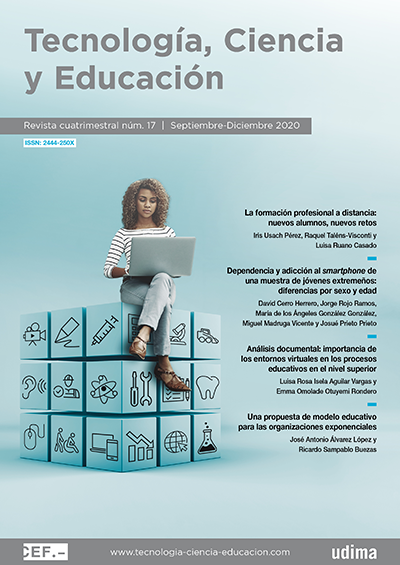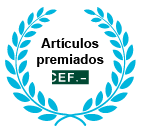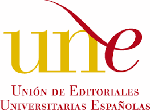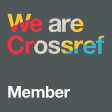Mejores prácticas y criterios de calidad en el proceso de desarrollo de código en los cursos de programación en la enseñanza superior
DOI:
https://doi.org/10.51302/tce.2020.489Palabras clave:
prácticas de programación, criterios de calidad (CC), ciclo de vida (CV), desarrollo de programas, educación superiorResumen
El interés de este estudio radica en contribuir a investigar las dificultades que presentan los estudiantes en los cursos de programación, quienes invierten tiempo al desarrollar programas con deficiencias. Por esta razón, este artículo ofrece una perspectiva de la situación de la programación en la educación superior en México basándose en entrevistas realizadas a docentes que imparten clases de programación en diferentes universidades de la República Mexicana, así como en estudios efectuados en instituciones de educación superior (IES) sobre el tema de la programación. Asimismo, se expone la investigación realizada sobre las prácticas de ingeniería de software y los criterios de calidad (CC) utilizados en los cursos de programación en el ámbito universitario, considerando a docentes de universidades públicas. El objetivo de este estudio es establecer un conjunto de buenas prácticas, administrativas y de ingeniería, y CC en el proceso de desarrollo, en el ciclo de vida (CV), para mejorar los cursos de programación y para alentar a los estudiantes a adoptar buenas prácticas en las primeras fases de su formación profesional. Lo anterior contribuirá a que mejoren su proceso de desarrollo y a que creen programas con resultados óptimos.Descargas
Citas
Boehm, B. W., Brown, J. R. y Lipow, M. (1976). Quantitative evaluation of software quality. ICSE '76 Proceedings of the 2nd International Conference on Software Engineering, 592-605.
Bosse, Y. y Gerosa, M. A. (2016). Why is programming so difficult to learn? Patterns of difficulties related to programming learning. ACM SIGSOFT Software Engineering Notes, 41(6), 1-6. doi: https://doi.org/10.1145/3011286.3011301.
Bosse, Y. y Gerosa, M. A. (2017). Difficulties of programming learning from the point of view of students and instructors. IEEE Latin America Transactions, 5(11), 2.191-2.199. doi: https://doi.org/10.1109/TLA.2017.8070426.
BS ISO/IEC. (2011). Systems and software engineering-Systems and software quality requirements and evaluation (SQUARE)-System and software quality models. BSI Standars Publication. Recuperado de https://pdfs.semanticscholar.org/57a5/b99eceff9da205e244337c9f4678b5b23d25.pdf (consultado el 9 de diciembre de 2016).
Dave, Z. (2004). Software Quality Requirements and Evaluation, the ISO 25000 Series. Recuperado de http://www.psmsc.com/downloads/twgfeb04/04zubrowiso25000swqualitymeasurement.pdf (consultado el 9 de diciembre de 2019).
Dromey, R. G. (1995). A model for software product quality. IEEE Transactions on Software Engineering, 21(2), 146-162. doi: https://doi.org/10.1109/32.345830.
Figueiredo, J., Gomes, N. y García, F. J. (2016). ne-Course for learning programming. Proceedings of the 4th International Conference on Technological Ecosystems for Enhancing Multiculturality, 549-553. doi: https://doi.org/10.1145/3012430.3012572.
Fuentes, J. y Medina, M. (2017). Dificultades de aprender a programar. Educación en Ingeniería, 12(24), 76-82. doi: https://doi.org/10.26507/rei.v12n24.728.
Insuasti, J. (2016). Problemas de enseñanza y aprendizaje de los fundamentos de programación. Educación y Desarrollo Social, 10(2), 234-246.
ISO/IEC. (2016). Systems and software engineering-Systems and software quality requirements and evaluation (SQUARE)-Measurement of system and software product quality. ISO/IEC. Recuperado de https://www.sis.se/api/document/preview/920620/ (consultado el 6 de diciembre de 2019).
ISO/IEC JTC1. (2000). Information technology-Software product quality. Part 1. Quality model. ISO/IEC. Recuperado de https://www.cse.unsw.edu.au/~cs3710/PMmaterials/Resources/9126-1%20Standard.pdf (consultado el 6 de diciembre de 2019).
Krusche, S., Berisha, M. y Bruegee, B. (2016). Teaching code review management using branch based workflows. IEEE/ACM. 38th IEEE International Conference on Software Engineering Companion, 384-393. doi: https://doi.org/10.1145/2889160.2889191.
López, L. (2011). Metodologías para la enseñanza del aprendizaje de la programación estructurada y orientada a objetos. Sistemas, Cibernética e Informática, 8(1), 52-60.
Machine, I. (2018). Intelligent tutor for programming system using multiple intelligences. IEEE Latin America Transactions, 16(2), 634-638. doi: https://doi.org/10.1109/TLA.2018.8327423.
Macías, H. R., Zamora, V. M., Osorio, S. y Jiménez, M. (2016). The development skills in software design using a virtual learning environment. Tecnología Educativa. Revista CONAIC, 3(1), 22-28.
McCall, J. A., Richards, P. K. y Walters, G. F. (1977). Factors in Software Quality. RADC TR-77-369. Rome: Rome Air Development Center. Recuperado de https://pdfs.semanticscholar.org/82a9/18fd83f1c0addb890ef313ff892807a10a11.pdf (consultado el 7 de diciembre de 2019).
Michael, N. y Martínez, P. (2013). Mejora del aprendizaje de Programación Orientada a Objetos. Revista Iberoamericana para la Investigación y el Desarrollo Educativo, 10.
Nel, G., Nel, L. y Cronje, J. (2015). Attributes contributing to students´ use of quality software development practices. The African Journal of Information and Communications, 15(1), 38-50.
Olier, A. J., Gómez, A. A. y Caro, M. F. (2017). Design and implementation of a teaching tool for introduction to object oriented programming. IEEE Latin America Transactions, 15(1), 97-102. doi: https://doi.org/10.1109/TLA.2017.7827913.
Olivares, J. C., Jiménez, J. A., Ortiz, O. y Rodríguez, N. E. (2015). Desarrollo de una aplicación para fortalecer el aprendizaje de los fundamentos de programación. Revista de Ciencia e Ingeniería del Instituto Superior de Coatzacoalcos, 2(2), 1-4.
Ozmen, A. y Altun, A. (2014). Undergraduate students experiences in programming: difficulties and obstacles. Turkish Online Journal of Qualitative Inquiry, 5(4), 9-27.
Qian, Y. y Lehman, J. (2017). Students´ misconceptions and other difficulties in introductory programming: a literature review. ACM Transations on Computing Education, 18(1), 1-24. doi: https://doi.org/10.1145/3077618.
Romero, M., Lepage, A. y Lille, B. (2017). Computational thinking development through creative programming in higher education. International Journal of Educational Technology in Higher Education, 14(1), 1-15.
Rong, G., Zhang, H., Qi, S. y Shao, D. (2016). Can software engineering students program defect-free? An educational approach. IEEE/ ACM. 38th IEEE International Conference on Software Engineering Companion, 364-373. doi: https://doi.org/10.1145/2889160.2889189.
Sampieri, R., Fernández, C. y Baptista, B. (2006). Metodología de la investigación. México: McGraw-Hill.
Sánchez, J., Urías, M. y Gutiérrez, B. (2015). Análisis de los problemas de aprendizaje de la programación orientada a objetos. Ra Ximhai, 11(4), 289-304.
Suárez, L. F. y Garzás, P. J. (2014). I Jornada sobre calidad del producto software e ISO 25000. Santiago de Compostela, España: Xunta de Galicia.
UAM. (2013). Informe de actividades 2013. Recuperado de http://www.cua.uam.mx/pdf/Informe_anual_2013_Unidad_Cuajimalpa_Rector.pdf (consultado el 19 de diciembre de 2019).
Descargas
Publicado
Cómo citar
Número
Sección
Licencia
Derechos de autor 2020 Yedid Erandini Niño Membrillo, María del Rocío Morales Salgado, Sodel Vázquez Reyes, Bárbara Emma Sánchez Rinza

Esta obra está bajo una licencia internacional Creative Commons Atribución-NoComercial-SinDerivadas 4.0.



























